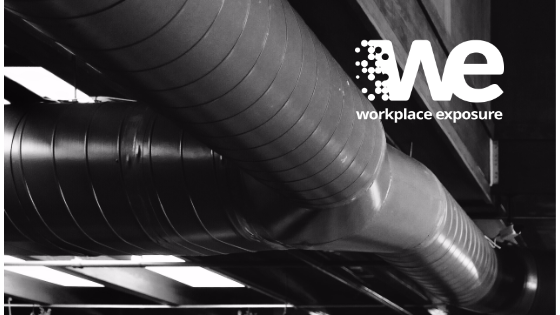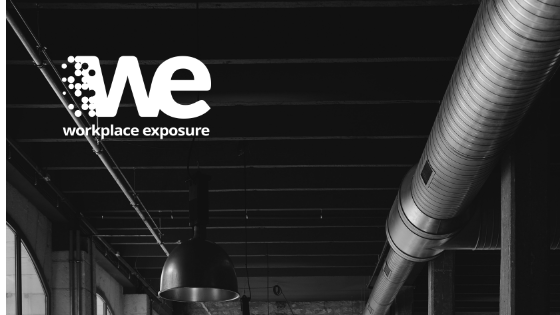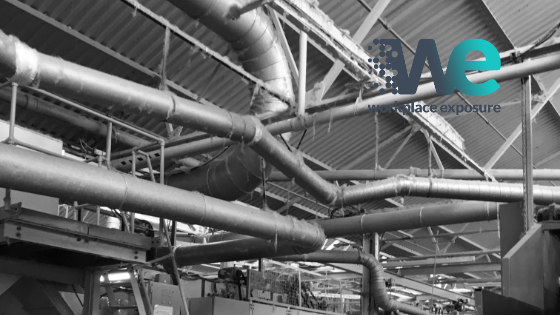Local Exhaust Ventilation
This article offers guidance to employers and others who operate and maintain Local Exhaust Ventilation (LEV) systems. The objective of LEV System Maintenance is to make certain that LEV systems, designed to reduce the risk of human exposure to substances hazardous to health, continue to operate effectively.
In industries where substances are released into the air, LEV systems are installed to capture harmful airborne substances, removing them from the workplace and safely disposing of them in order to safeguard workers’ health.
The Control of Substances Hazardous to Health Regulations (COSHH) requires the maintenance and thorough examination and testing of this control measure at specific intervals to ensure the continuing provision of an effective and efficient system.
To comply with the regulations, an LEV system must be examined and tested at least once every 14 months, or more frequently for certain processes such as the cleaning of metal castings.
The results of these tests, including details of any repairs, must then be kept on record for a minimum of five years. Read about the importance of regular LEV testing in our earlier blog entry.

What Do You Need to Know in Order to Carry Out the Maintenance of a Local Exhaust Ventilation (LEV) System?
LEV maintenance and repair engineers are typically service providers, but often an employee is asked to carry out regular checks and therefore must know:
- How the LEV system works
- How to recognise and assess hazards
- How to follow safe systems of work
- How to warn operators that maintenance is under way
- What methods to use to in order to assess the performance of the LEV system
- What routine maintenance is required and how to follow instructions laid out in a ‘user manual’
- What measures of performance to record and to whom to report any problems
What Are the Basic Components of a Local Exhaust Ventilation (LEV) System and How Are They Maintained?
1. The hood is designed to remove the contaminated air and therefore needs to be as close to the source of contamination as possible, in order to be effective. It must also be suitable for the type of work being performed, as well as the substance produced (for example, fumes or dust).
Consult an occupational hygienist, such as ourselves, to ensure the LEV system provides effective control.
The hood itself should not wear excessively with time unless mechanically damaged or corroded by materials carried in the duct, but we would always advise regular inspection as best practice.
2. The duct carries the contaminated air to the air cleaner. This is where dust can accumulate quickly. It’s not unheard of for ducting systems to cave in under the weight of heavy dust deposits and occasionally to catch fire.
It is therefore important to install a ducting system with easy access for inspection and cleaning.
3. The contaminated air is filtered through the air cleaner. This component may require more frequent attention depending on the type of LEV system in place. Contaminants may only need to be removed from filter bins, for example, on a weekly basis, or every working shift during high useage. Ensure that the filters in use can easily be cleaned or replaced without leading to further exposure.

4. The fan moves the contaminated air through the LEV system. Position the fan so that it can be easily maintained but will not create a noise hazard for employees. It is important to note that moving components, such as the fan, are more susceptible to wear and may require replacing in order to optimise the performance of the LEV system.
5. The exhaust stack disposes of the contaminated air outside. This should be positioned so that the contaminated air is discharged to the outside atmosphere without re-entering the building. Because it must withstand high wind loadings and heavy rain, the exhaust stack requires a high standard of maintenance to ensure it remains robust and well-supported. Regularly check the exhaust stack for corrosion and consult an occupational hygienist to make certain that the LEV system is disposing of the correct volume of air and that there are no leakages.
Suppliers and installers may offer specific guidance regarding the maintenance procedure and frequency for mechanical items. We would advise employers to regularly review the proposed maintenance schedules, taking into account the intensity of use and experience of the system, but this should never exceed 14 months.
It is also quite common for suppliers of the individual components to offer a maintenance contract. It is important to remember, however, that the final responsibility always lies with the employer to ensure the continuing provision of an effective and efficient system, and that obviously worn and damaged components are repaired or replaced promptly.
What Is the Difference Between Regular Maintenance and Local Exhaust Ventilation (LEV) System Testing?
Regular maintenance and inspection of an LEV system is not the same as thorough examination and testing, as legally required under COSHH regulations.
The aim of the former is to identify potential problems so that they can be rectified before the performance of the LEV system deteriorates. What form this maintenance takes, and its frequency will depend upon the nature of the work being carried out and the type of hazardous substance being released into the air.
At Workplace Exposure, we support employers in their efforts to protect employees, visitors and customers from exposure to substances hazardous to health, as well as offer professional solutions and advice to ensure LEV systems, and other control measures, are operating to maximum efficiency.
We’re here to help
At Workplace Exposure, our expert team have experience working with a variety of different businesses to ensure they offer a safe, compliant working environment. Our professional solutions and advice help to ensure your business meets compliance standards and is operating to best practice. If you need help in carrying out an LEV Assessment and Inspection survey we’re here to help.
Our approach
Get in touch with Workplace Exposure. Either give us a call on 0800 689 4386, or fill in our enquiry form to discuss your monitoring or consultancy requirements.
We’ll then provide you with a no-obligation proposal, we can often give an initial idea of fees whilst we discuss your needs.
Once you’ve accepted our proposal we can then schedule the work.
Following our site visit we’ll provide you with a comprehensive report giving you advice, recommendations and control measures where appropriate. Implement the outcomes for compliance and a happier healthier workplace.
